How To Play Powerpoint Presentation On Samsung Smart TV

- How-To Guides
- Tech Setup & Troubleshooting


Introduction
Welcome to the world of digital presentations! If you have a Samsung Smart TV and want to showcase your stunning PowerPoint presentations on a bigger screen, you’ve come to the right place. In this article, we will guide you through the process of connecting your Samsung Smart TV to your computer and playing PowerPoint presentations seamlessly.
Imagine the impact of showcasing your visually appealing slideshows on a large high-definition television screen, captivating your audience with every slide transition and vibrant color. With the advancement in technology, it’s easier than ever to bring your presentations to life on your Samsung Smart TV, creating a truly immersive experience.
Whether you’re a business professional looking to make a compelling sales pitch, an educator wanting to deliver engaging lessons, or simply someone who loves to share your creativity through presentations, this guide will help you unlock the full potential of your Samsung Smart TV.
In the following sections, we will explore different methods to connect your Samsung Smart TV to your computer, transfer PowerPoint presentations, and play them seamlessly on the big screen. From using HDMI cables to wireless options like Chromecast, AllShare Cast, and the Smart View app, we will cover it all.
We’ll also provide you with some valuable tips and tricks to enhance your viewing experience and troubleshoot any potential issues that may arise. So, let’s dive in and unleash the power of your PowerPoint presentations on your Samsung Smart TV!
Connecting Samsung Smart TV to Computer
In order to play PowerPoint presentations on your Samsung Smart TV, the first step is to establish a connection between your computer and the TV. Let’s explore the various methods you can use to achieve this:
- Wired Connection: The most straightforward method is to use an HDMI cable to connect your computer to the HDMI port on your Samsung Smart TV. Simply plug one end of the HDMI cable into your computer’s HDMI output port and the other end into the HDMI input port of your TV. Once connected, your TV will mirror your computer’s display.
- Wireless Connection: If you prefer a wireless setup, there are a few options available. One of the easiest ways is to use Chromecast , a device that plugs into your TV’s HDMI port and allows you to stream content wirelessly from your computer. To set it up, install the Chromecast app on your computer, connect the device to your TV, and follow the on-screen instructions to establish a connection between your computer and the TV.
- AllShare Cast (Samsung devices only): If you have a Samsung smartphone , tablet, or laptop, you can use the AllShare Cast feature to wirelessly mirror your device’s screen onto your Samsung Smart TV. Simply enable AllShare Cast on your Samsung device and search for available devices on your TV. Once connected, you can navigate to your PowerPoint presentation and play it directly on your TV.
- Smart View App (Samsung devices only): Another option for Samsung users is to utilize the Smart View app . This app allows you to stream content wirelessly from your Samsung device to your Samsung Smart TV. Install the Smart View app on your device, connect it to your TV using the same Wi-Fi network, and select the PowerPoint presentation you wish to play on your TV.
By following one of these methods, you will establish a connection between your computer and Samsung Smart TV, making it possible to transfer and play PowerPoint presentations seamlessly. Now that you’ve successfully connected your devices, let’s move on to the next step: transferring your PowerPoint presentation to your Samsung Smart TV.
Transferring PowerPoint Presentation to Samsung Smart TV
Now that you have established a connection between your computer and your Samsung Smart TV, it’s time to transfer your PowerPoint presentation to the TV. There are a few different methods you can use to accomplish this:
- USB Drive: One of the most straightforward ways to transfer your PowerPoint presentation is by using a USB drive. Simply save your presentation file onto a USB drive, plug it into the USB port on your Samsung Smart TV, and navigate to the file using the TV’s file explorer. From there, you can open and play the presentation directly on your TV.
- Network Sharing: If your computer and Samsung Smart TV are connected to the same Wi-Fi network, you can take advantage of network sharing to transfer your PowerPoint presentation. Locate the presentation file on your computer, right-click on it, and select the option to share it on the network. On your Smart TV, navigate to the network shares or media server section and access the shared presentation file.
- Cloud Storage: Another convenient method for transferring your PowerPoint presentation is to store it in a cloud storage service like Google Drive, Dropbox, or OneDrive. Upload the presentation file to your cloud storage account and install the corresponding app on your Samsung Smart TV. Open the app on your TV, sign in to your account, and access the presentation file to play it on the big screen.
- Remote Access: If you have remote access software installed on your computer, such as TeamViewer or AnyDesk, you can remotely control your computer from your Samsung Smart TV. Install the remote access app on your TV, establish a connection with your computer, and navigate to your PowerPoint presentation to display it on the TV.
Choose the method that is most convenient for you based on the available resources and your personal preference. Once the PowerPoint presentation is successfully transferred to your Samsung Smart TV, you’re now ready to enjoy your slideshows on the big screen. In the next section, we will explore different ways to play your PowerPoint presentation on your Samsung Smart TV using the connection you’ve established.
Using HDMI Cable to Play PowerPoint Presentation on Samsung Smart TV
If you prefer a reliable and direct method to play your PowerPoint presentation on your Samsung Smart TV, using an HDMI cable is a great option. This method ensures a stable connection and guarantees high-quality video output. Follow these steps to play your presentation using an HDMI cable:
- Connect one end of the HDMI cable to the HDMI output port on your computer. Make sure to remember which HDMI port you have connected to.
- Connect the other end of the HDMI cable to one of the HDMI input ports on your Samsung Smart TV. Again, remember the HDMI port you have used.
- On your Samsung Smart TV, use the remote control to navigate to the source menu and select the corresponding HDMI input that you connected the cable to.
- Ensure that your computer is set to duplicate or extend the display to the Samsung Smart TV. This can be done through the display settings on your computer. Refer to your computer’s instruction manual or the operating system’s documentation for detailed instructions.
- Once the HDMI connection is established and the display is properly extended or duplicated, open your PowerPoint presentation on your computer.
- Go into slideshow mode in PowerPoint and play your presentation as you normally would. The presentation will now be mirrored or extended onto your Samsung Smart TV.
- Use the remote control for your Smart TV to control the slideshow navigation, or have a wireless keyboard or mouse connected to your computer for more convenience.
Using an HDMI cable is a simple and reliable method to play your PowerPoint presentation on your Samsung Smart TV. The cable provides a direct connection between your computer and TV, ensuring smooth playback and minimal latency. Enjoy the impressive visuals and immersive experience as your presentation comes to life on the big screen of your Samsung Smart TV.
Next, we will explore another wireless option using Chromecast to play your PowerPoint presentation on your Samsung Smart TV.
Using Chromecast to Play PowerPoint Presentation on Samsung Smart TV
If you prefer a wireless option to play your PowerPoint presentation on your Samsung Smart TV, using Chromecast is an excellent choice. Chromecast allows you to stream content from your computer directly to your TV through a Wi-Fi network. Follow these steps to use Chromecast:
- Ensure that your Samsung Smart TV and your computer are connected to the same Wi-Fi network.
- Plug the Chromecast device into the HDMI port of your Samsung Smart TV.
- On your computer, install the Google Chrome browser if you haven’t already.
- Open Google Chrome and install the Google Cast extension from the Chrome Web Store.
- Once installed, click on the Google Cast extension icon in the Chrome toolbar .
- Select your Chromecast device from the available list of devices.
- After connecting to Chromecast, open your PowerPoint presentation in the Google Slides web app.
- In the Google Slides web app, go into fullscreen mode and start the slideshow.
- Your PowerPoint presentation will now be displayed on your Samsung Smart TV via Chromecast.
- Use your computer or mobile device as a remote control to navigate through the slides.
Using Chromecast provides you with the convenience of wirelessly streaming your PowerPoint presentation to your Samsung Smart TV. You can easily control the presentation from your computer or mobile device, allowing you to move around and interact with your audience seamlessly.
With Chromecast, you can enjoy the flexibility of casting not only from your computer but also from other devices, such as smartphones or tablets, making it a versatile solution for playing your PowerPoint presentations on your Samsung Smart TV.
Next, let’s explore another option specifically designed for Samsung devices – using AllShare Cast to play your PowerPoint presentation on your Samsung Smart TV.
Using AllShare Cast to Play PowerPoint Presentation on Samsung Smart TV
If you own a Samsung smartphone, tablet, or laptop, you can take advantage of the AllShare Cast feature to wirelessly display your PowerPoint presentation on your Samsung Smart TV. AllShare Cast allows you to mirror your device’s screen onto the TV, providing a seamless viewing experience. Follow these steps to use AllShare Cast:
- Ensure that both your Samsung device and your Samsung Smart TV are connected to the same Wi-Fi network.
- On your Samsung device, go to the “Settings” menu and select “Screen Mirroring” or “Smart View.”
- The device will start searching for available devices to connect to. Select your Samsung Smart TV from the list.
- Your Samsung device’s screen will now be mirrored on your Samsung Smart TV.
- Open your PowerPoint presentation on your Samsung device.
- Enter slideshow mode to start the presentation.
- Your PowerPoint presentation will be displayed on your Samsung Smart TV through AllShare Cast.
- You can control the presentation using your Samsung device’s touchscreen or optional peripherals, such as a stylus or Bluetooth keyboard.
Using AllShare Cast provides you with the convenience of wirelessly mirroring your Samsung device’s screen onto your Samsung Smart TV. This feature is particularly useful if you have your PowerPoint presentation saved on your Samsung device and want to present it directly without the need for additional transfers or connections.
With AllShare Cast, you can showcase your PowerPoint presentation with ease, utilizing the full capabilities of your Samsung device and enjoying the immersive visuals on your Samsung Smart TV.
Now that you’ve learned about using AllShare Cast, let’s explore another wireless option specifically designed for Samsung devices – using the Smart View app to play your PowerPoint presentation on your Samsung Smart TV.
Using Smart View App to Play PowerPoint Presentation on Samsung Smart TV
If you are a Samsung device user, you can utilize the Smart View app to wirelessly display your PowerPoint presentation on your Samsung Smart TV. The Smart View app provides a seamless connection between your Samsung device and TV, allowing you to navigate and present your slides with ease. Follow these steps to use the Smart View app:
- On your Samsung device, download and install the Smart View app from the Google Play Store (for Android devices) or the App Store (for iOS devices).
- Open the Smart View app on your Samsung device and select your Samsung Smart TV from the list of available devices.
- The app will establish a connection between your Samsung device and your TV.
- Your PowerPoint presentation will be displayed on your Samsung Smart TV through the Smart View app.
- You can control the presentation using your Samsung device by tapping or swiping on the screen.
Using the Smart View app provides you with a convenient and intuitive way to present your PowerPoint slides on your Samsung Smart TV. With the ability to control the presentation directly from your Samsung device, you can freely move around and engage with your audience while delivering a dynamic and captivating presentation.
The Smart View app offers a seamless connection between your Samsung device and TV, allowing you to fully utilize the features of your Samsung device and enjoy a high-quality presentation on your Samsung Smart TV.
Now that you’ve explored various wireless options, as well as using an HDMI cable, let’s move on to the next section, where we’ll provide you with some valuable tips and tricks for playing PowerPoint presentations on your Samsung Smart TV.
Tips and Tricks for Playing PowerPoint Presentation on Samsung Smart TV
Here are some tips and tricks to enhance your experience when playing PowerPoint presentations on your Samsung Smart TV:
- Optimize your presentation: Before transferring your PowerPoint presentation to your Samsung Smart TV, optimize it by reducing the file size, compressing images, and ensuring compatibility with the TV. This will help improve the loading time and ensure smoother playback.
- Choose the right display mode: When playing your PowerPoint presentation on your Samsung Smart TV, choose the appropriate display mode that suits your needs. You can opt for duplicating the screen, extending it, or selecting the “Presenter View” if you’re using a device that supports it.
- Use a wireless presenter: To have better control over your presentation while standing in front of your Samsung Smart TV, consider using a wireless presenter or a Bluetooth-enabled device that allows you to navigate through slides without needing to be close to your computer or device.
- Utilize presentation remotes: Smart TVs often have smartphone/tablet apps or dedicated remotes that can act as presentation remotes. Take advantage of these features to control your presentations more conveniently.
- Practice and rehearse: Before presenting on your Samsung Smart TV, practice and rehearse your PowerPoint presentation to ensure smooth transitions, proper timing, and familiarity with the content. This will help you deliver a polished and confident presentation.
- Consider using animations and transitions: To make your presentation visually engaging on the big screen, utilize animations and transitions in your PowerPoint slides. However, ensure you use them judiciously and avoid going overboard, as excessive animations may distract or overwhelm your audience.
- Test compatibility and formatting: Before the actual presentation, test your PowerPoint presentation on your Samsung Smart TV to ensure that all formatting, fonts, and media are displayed correctly. Make any necessary adjustments to ensure the best possible viewing experience.
- Use a high-quality display source: If possible, ensure that the source material for your PowerPoint presentation (such as images or videos) is of high quality. This will enhance the visual experience on your Samsung Smart TV and captivate your audience.
- Engage your audience: Take advantage of the dynamic and immersive nature of your Samsung Smart TV to engage your audience. Move around the room, make eye contact, and use gestures to amplify your message and create a memorable experience.
By following these tips and tricks, you can elevate your PowerPoint presentations on your Samsung Smart TV and leave a lasting impression on your audience. With proper planning and utilization of the TV’s features, you can deliver an impactful and visually stunning presentation.
Now that you’re equipped with these tips, it’s time to put them into practice and make the most out of your PowerPoint presentations on your Samsung Smart TV.
Playing PowerPoint presentations on your Samsung Smart TV opens up a whole new world of possibilities for sharing your ideas and captivating your audience. Whether you choose to connect via HDMI cable, utilize wireless options like Chromecast, AllShare Cast, or the Smart View app, the process of showcasing your presentations on the big screen is easier than ever.
In this guide, we explored different methods to connect your Samsung Smart TV to your computer, transfer your PowerPoint presentations, and play them seamlessly. We discussed the reliability of using an HDMI cable, the convenience of wireless options like Chromecast and AllShare Cast for Samsung devices, and the versatility of the Smart View app.
To enhance your experience, we provided valuable tips and tricks, such as optimizing your presentation, choosing the right display mode, using wireless presenters or smartphone apps as remotes, and practicing your delivery. These tips will help you make the most out of your PowerPoint presentations and engage your audience effectively.
Now that you have the knowledge and tools to play your PowerPoint presentations on your Samsung Smart TV, it’s time to unleash your creativity, captivate your audience, and deliver impactful presentations on the big screen. Whether you’re in a business meeting, classroom, or simply sharing your ideas with friends and family, the impressive visuals and immersive viewing experience offered by your Samsung Smart TV will leave a lasting impression.
So, connect your devices, transfer your presentations, choose the right method for your needs, and embrace the power of sharing your PowerPoint presentations on your Samsung Smart TV. Enjoy the seamless connectivity, brilliant display, and dynamic presentation capabilities that this setup offers.
Now it’s your turn. Start exploring the possibilities and share your ideas with the world on your Samsung Smart TV!
Leave a Reply Cancel reply
Your email address will not be published. Required fields are marked *
Save my name, email, and website in this browser for the next time I comment.
- Crowdfunding
- Cryptocurrency
- Digital Banking
- Digital Payments
- Investments
- Console Gaming
- Mobile Gaming
- VR/AR Gaming
- Gadget Usage
- Gaming Tips
- Online Safety
- Software Tutorials
- Tech Setup & Troubleshooting
- Buyer’s Guides
- Comparative Analysis
- Gadget Reviews
- Service Reviews
- Software Reviews
- Mobile Devices
- PCs & Laptops
- Smart Home Gadgets
- Content Creation Tools
- Digital Photography
- Video & Music Streaming
- Online Security
- Online Services
- Web Hosting
- WiFi & Ethernet
- Browsers & Extensions
- Communication Platforms
- Operating Systems
- Productivity Tools
- AI & Machine Learning
- Cybersecurity
- Emerging Tech
- IoT & Smart Devices
- Virtual & Augmented Reality
- Latest News
- AI Developments
- Fintech Updates
- Gaming News
- New Product Launches
How Text Animation Can Boost Your Content and Creativity
5 ways to free convert flac to mp3 on pc, related post, what is the best color palette for youtube videos, hyperbaric oxygen therapy: revolutionizing treatment for various conditions, 12 best free ai image sharpeners in 2024 (web/pc/mobile), apple wallet availability in the pocketguard app: sync your apple card, apple cash, and savings from apple card accounts, learn to convert scanned documents into editable text with ocr, unleashing young geniuses: how lingokids makes learning a blast, related posts.
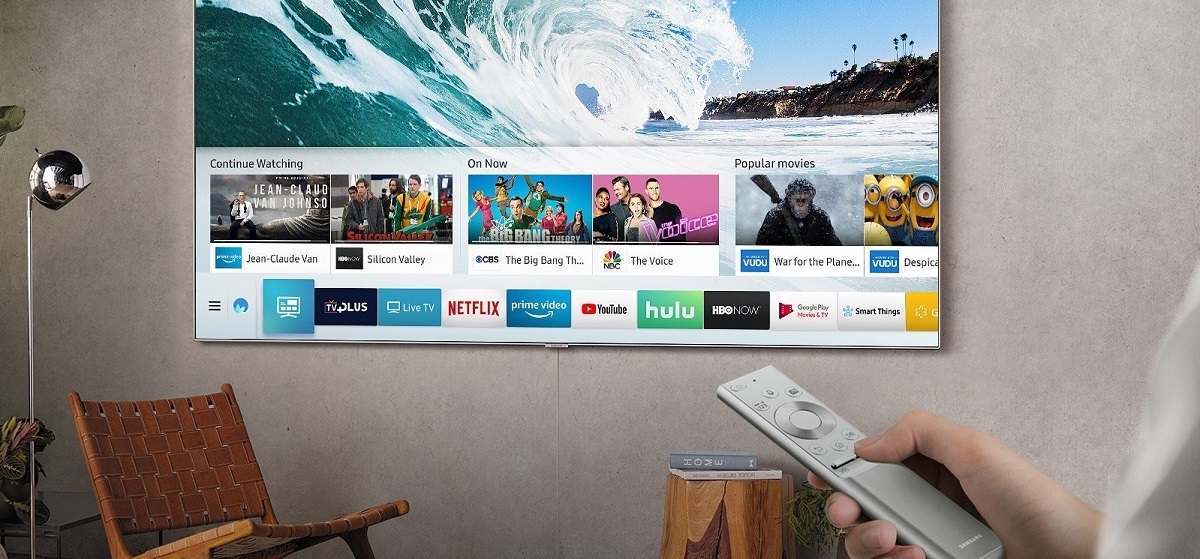
What Files Can Samsung Smart TV Play
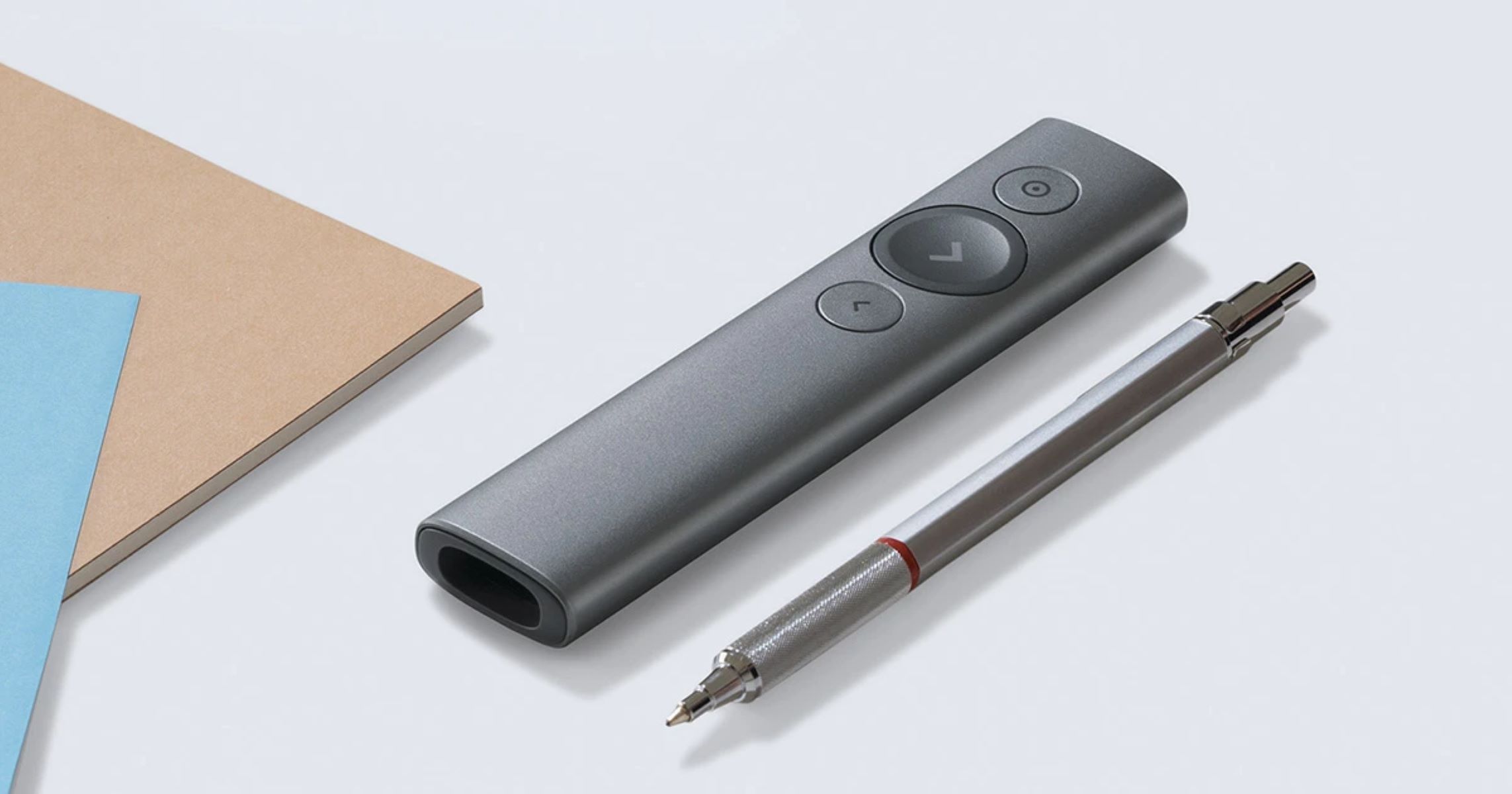
15 Amazing Logitech Presentation Remote for 2024
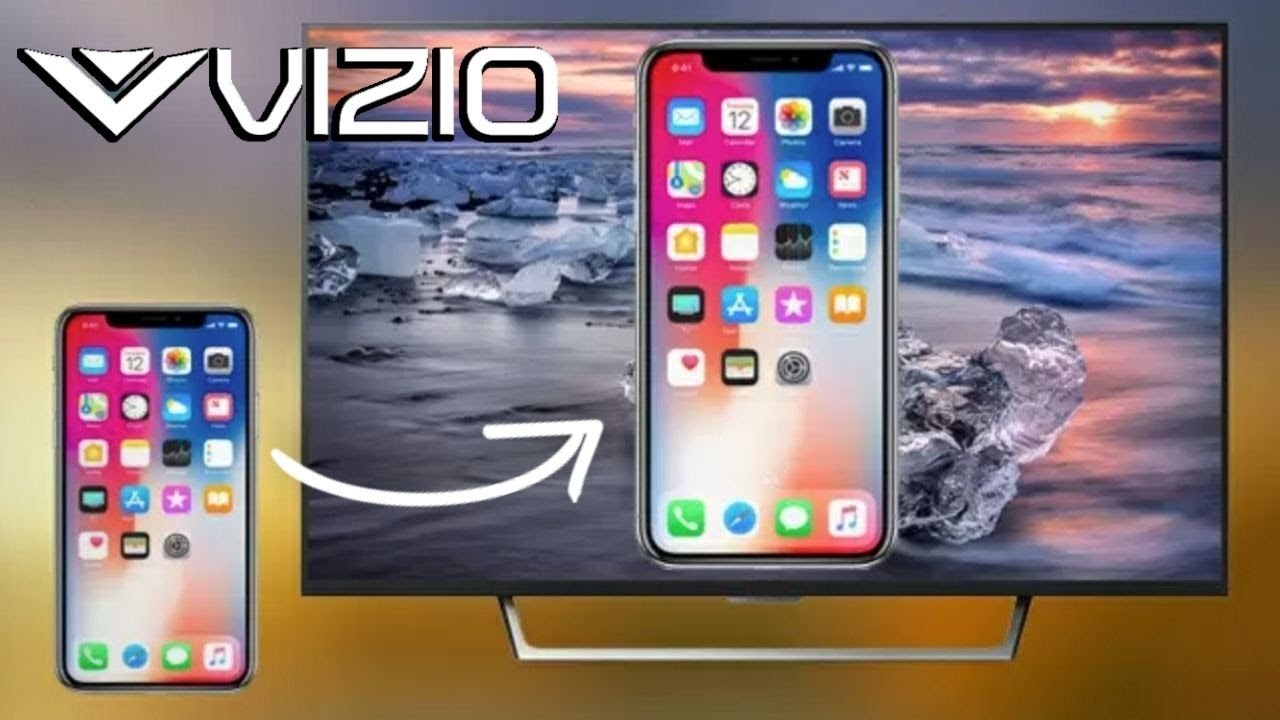
How To Screen Mirror On A Vizio Smart TV
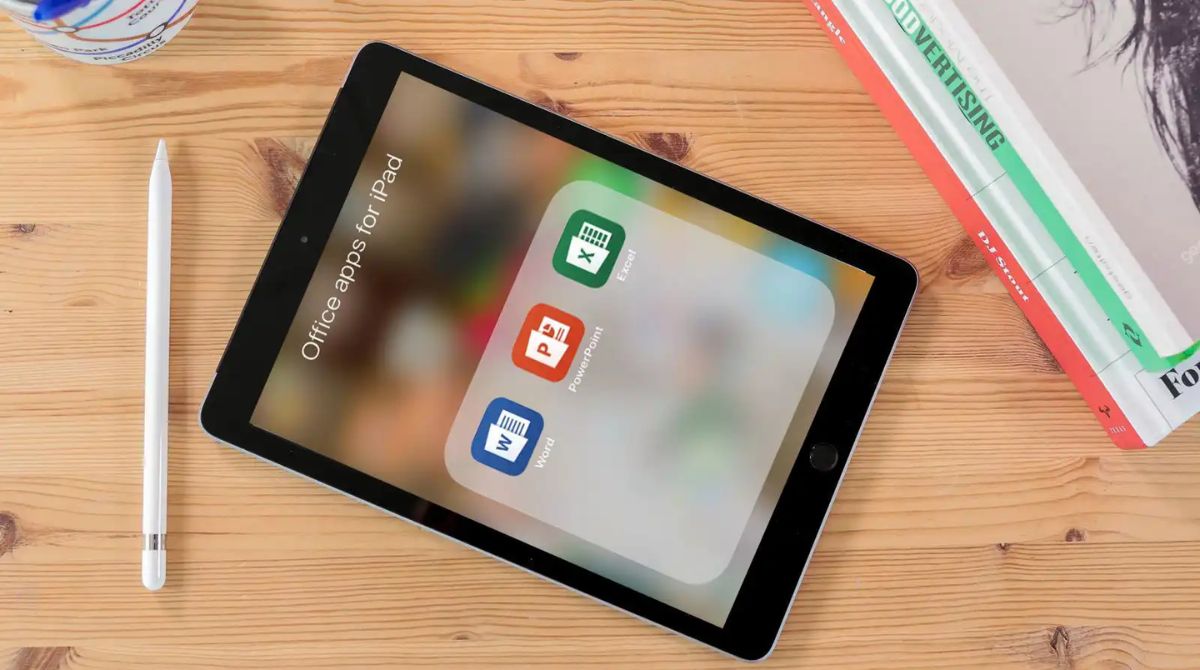
Which Tablet Has Microsoft Office
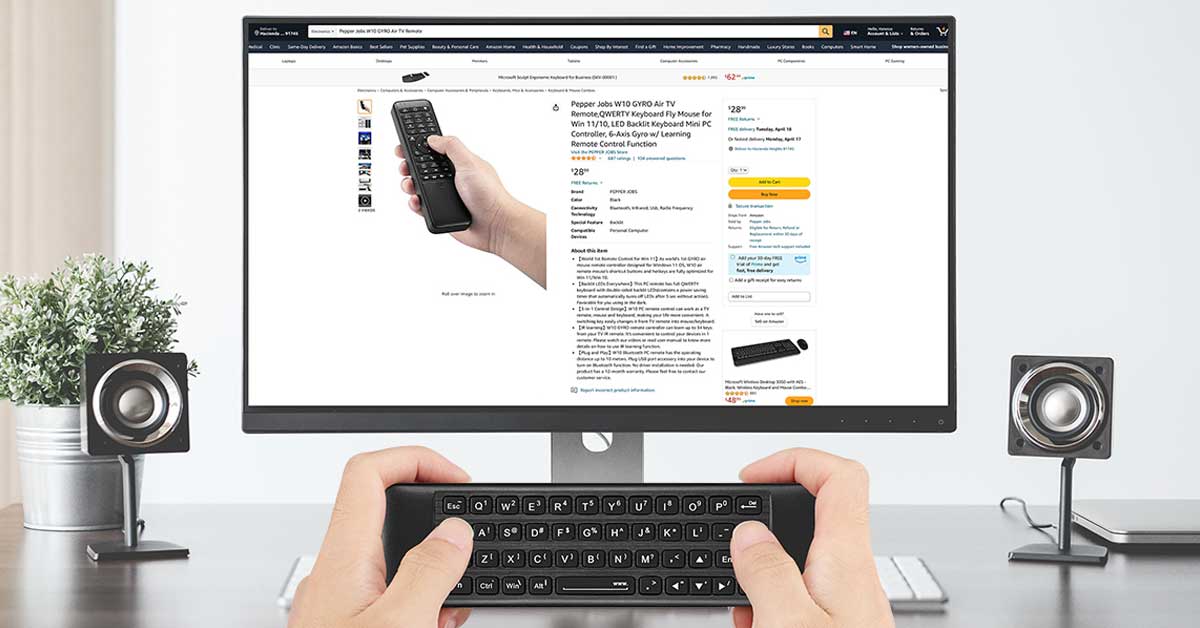
11 Amazing Pc Remote for 2024
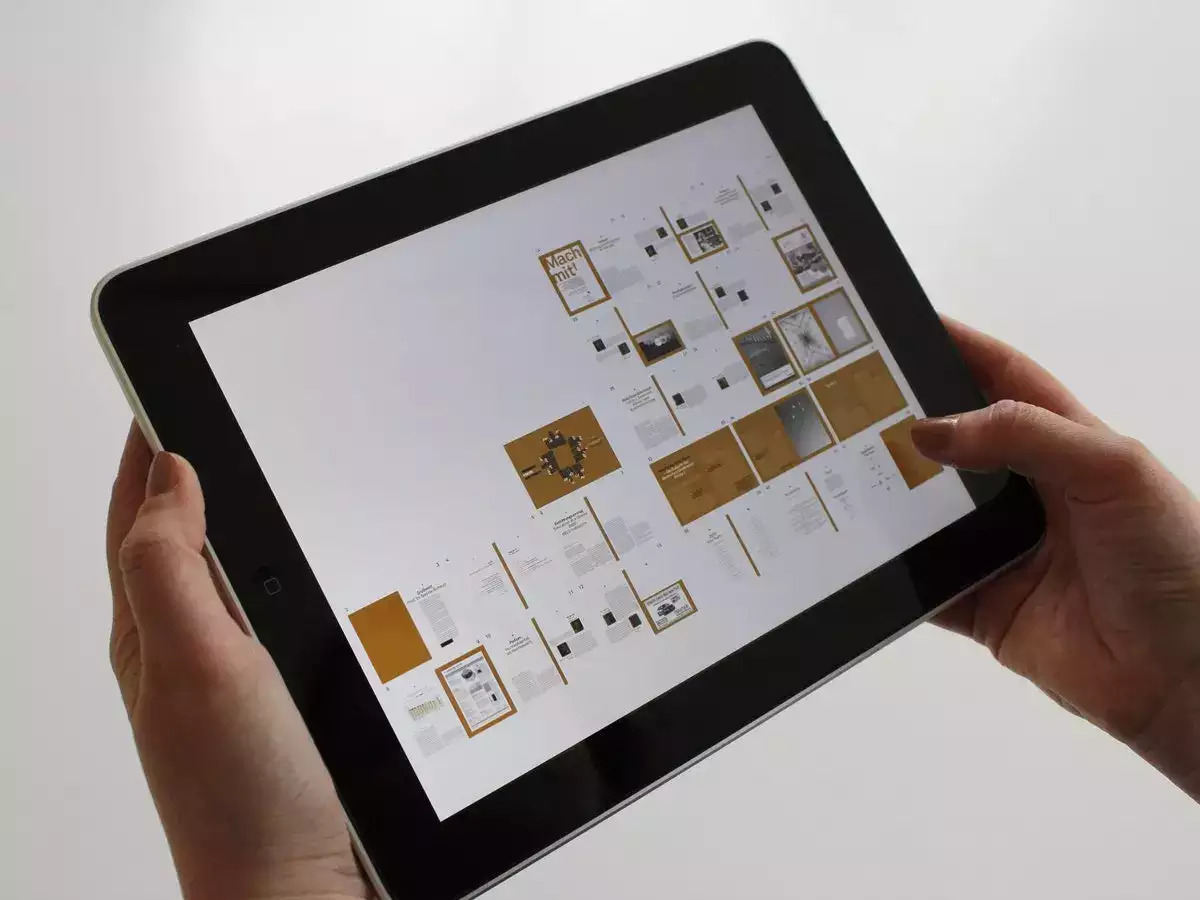
What Tablet Should I Buy For College
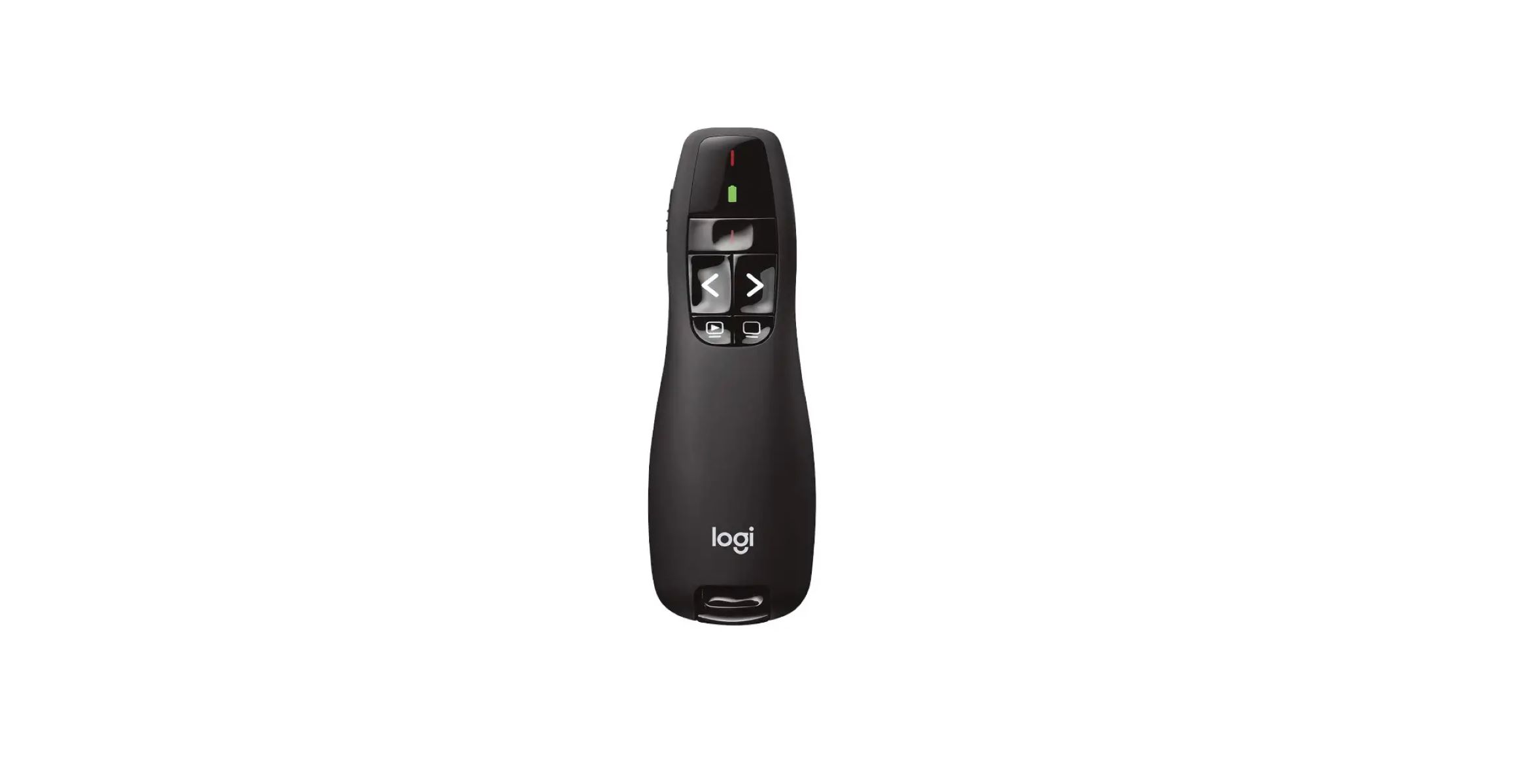
13 Best Logitech Clicker for 2024

How To Download Google Slides With Audio To Powerpoint
Recent stories.

Behind the Scenes of Artificial Intelligence: Leading IT Expert in the Middle East Ali Kamran on the Secrets of Machine Learning

Sanjuksha Nirgude Soaring High with Robotics

OpenStack Backup and Recovery Software

- Privacy Overview
- Strictly Necessary Cookies
This website uses cookies so that we can provide you with the best user experience possible. Cookie information is stored in your browser and performs functions such as recognising you when you return to our website and helping our team to understand which sections of the website you find most interesting and useful.
Strictly Necessary Cookie should be enabled at all times so that we can save your preferences for cookie settings.
If you disable this cookie, we will not be able to save your preferences. This means that every time you visit this website you will need to enable or disable cookies again.
Byte Bite Bit
How to Cast PowerPoint to TV: Easy Steps for Seamless Presentation
Ever wondered how to cast your PowerPoint presentations to your TV screen effortlessly? Whether you’re prepping for a business pitch, sharing vacation photos, or just showcasing your latest project, displaying your slides on a big screen can make a huge impact. By following a few simple steps, you can easily cast your PowerPoint presentations to your TV using devices such as Chromecast, Roku, or even a simple HDMI cable.

Daydreaming about that big presentation? Imagine standing confidently in your living room, remote in hand, moving through your slides as they appear in stunning clarity on your TV. Here’s a tip from my toolkit: connecting your PC or Android device via HDMI or using Google Chrome’s Screen Cast feature can transform your presentation experience.
And guess what? It’s not just for tech wizards. With options like the Smart View app for Samsung Smart TVs, or network sharing for those who prefer a wireless setup, you’ve got a myriad of methods at your fingertips. The days of huddling around a tiny laptop screen are over. Get ready to put your PowerPoint slides on the big screen like a pro!
- 1.1 Crafting Engaging Content
- 1.2 Designing Effective Slides
- 2.1 Wired Connections
- 2.2 Wireless Solutions
- 3.1 Using Advanced Features
- 3.2 Engaging Your Audience
- 4.1 No Signal on TV
- 4.2 Audio Issues
- 4.3 Screen Mirroring Problems
- 4.4 PowerPoint Won’t Display
- 4.5 Connectivity Issues with Smart TV
- 4.6 Projector Problems
- 4.7 Video Playback Problems
Preparing Your Presentation
When getting ready to cast your PowerPoint presentation to a TV, the two key areas to focus on are crafting engaging content and designing effective slides for maximum impact.
Crafting Engaging Content
To make your PowerPoint presentation engaging, start by outlining the key points you want to cover. Use clear and concise language. Avoid large blocks of text. Audience attention can wane quickly, so make each slide count.
Incorporate various media, such as images, videos (e.g., MP4 files), and audio , to break the monotony of just text. Images like JPG files can visually reinforce your message. Adding relevant video files can help illustrate complex points better than verbal explanations alone.
Interactive elements such as questions or quizzes can also keep your audience engaged. Remember, a bit of humor or an interesting anecdote can make your presentation more relatable and memorable.
Designing Effective Slides
Effective slide design is crucial. Stick to a clean, consistent layout throughout your presentation. Use a mix of bullet points and images. Too much text can overwhelm people. Instead, summarize key points.
Choose a readable font size and style. Avoid fancy fonts that are hard to read. Consistent use of colors aligned with your brand can enhance the visual appeal. For Microsoft PowerPoint 2010 and other versions, the built-in templates can streamline the process.
Using transitions and animations sparingly keeps the flow smooth. Overuse can be distracting. A smartphone can be handy to test how the slides look remotely. Finally, pack your digital content carefully, ensuring all media files are properly embedded or referenced for smooth playback.
Connecting Devices
Casting your PowerPoint to a TV involves choosing between wired connections or wireless solutions. Depending on your device and setup, one method might be more convenient than the other.
Wired Connections
If you’re like me, sometimes simple and direct is best. Using an HDMI cable is a tried-and-true method.
1. Connect the HDMI Cable: Plug one end of the HDMI cable into your laptop’s HDMI port . Most laptops have one on the side or back.
2. Attach to the TV: Insert the other end into an available HDMI port on your TV. These ports are typically found on the side or back.
3. Select the HDMI Input: Use your TV’s remote control to switch to the correct HDMI input . Look for buttons like “Source” or “Input” on the remote.
Pro Tip: Make sure your TV is on the right channel. If there are multiple HDMI ports, you may need to try a few.
Accessories: Sometimes, a converter is needed, especially if your laptop doesn’t have an HDMI port. A USB-C to HDMI adapter can work wonders.
Connecting via HDMI isn’t as flashy as wireless, but it gets the job done with minimal fuss. Just plug and play!
Wireless Solutions
For those who appreciate a tidy setup and flexibility, wire-free is the way to go. Devices like Chromecast and Apple AirPlay simplify the connection process.
Chromecast:
- Plug in the Chromecast Device: Insert the Chromecast into your TV’s HDMI port .
- Set Up: Open the Google Home app on your mobile or tablet . Follow the instructions to connect the Chromecast to your Wi-Fi network .
- Cast Your Screen: Open your presentation on your laptop using Google Chrome . Click the three dots in the corner, select “ Cast ”, pick your Chromecast, and choose “Cast Desktop.”
Apple AirPlay:
- Connect to the Same Wi-Fi: Ensure your Apple device and TV or Apple TV are on the same network.
- Use AirPlay: On your iOS device, swipe to open the Control Center , tap “ Screen Mirroring ,” and select your TV or Apple TV.
These methods keep your living room cable-free and let you control the presentation from your desktop or mobile device . Optimal for a sleek and modern boardroom setup or a conference presentation.
With so many options, I’ve got you covered whether you prefer good old-fashioned cables or the latest wireless tech. Get your PowerPoint up on the big screen hassle-free!
Enhancing Your Presentation With Technology
Incorporating technology into your PowerPoint presentations can greatly improve the impact and engagement of your content. Using advanced features and actively engaging your audience can make all the difference.
Using Advanced Features
I always make sure to leverage the advanced features of my presentation tools. One method is to use animated slides and transitions . The smooth movement from one slide to the next can keep your audience’s attention.
Another powerful feature is embedding videos . It allows me to play relevant clips without switching out of the presentation mode. Using Google Chrome Browser to present PowerPoint, with the help of extensions, can enhance functionality, like adding interactive polls to receive immediate feedback.
Applying Apple AirPlay or using a Chromecast Stick can make the connection process to your smart TV seamless. These tools enable wireless casting, letting me walk around freely while presenting. For those using Microsoft devices, a wired connection through an HDMI cable is reliable and ensures a high-quality connection without latency issues.
Engaging Your Audience
Engagement is key. When giving a presentation, I incorporate interactive elements. I find that using the latest tech gadgets, like a tablet or smartphone as a remote, can enhance interactivity. Controlling the PowerPoint presentation remotely helps focus on interaction rather than being tethered to a laptop.
I also suggest using Google Home to control the slideshow through voice commands. It’s an innovative way to captivate the audience and make the presentation more dynamic. Don’t forget about sound. Ensuring that audio elements such as background music or embedded videos play clearly can significantly elevate the experience.
Using two screens, such as a laptop display for notes and the TV for slides, allows me to present more confidently without missing any key points. Digital signage can also be an alternative for larger venues, ensuring visibility for every attendee.
Troubleshooting Common Issues
Casting a PowerPoint presentation to a TV can sometimes be tricky. Here are some common issues and how to fix them.

No Signal on TV
First, ensure that the HDMI cable is connected securely to both the laptop and TV . Use the TV remote to switch to the correct HDMI input . If there’s still no signal, try restarting both your laptop and TV.
Audio Issues
If there’s no sound , check if the audio is muted on either your laptop or TV. Sometimes the sound output remains set to the laptop instead of the TV. In your laptop’s settings, set the default playback device to the TV.
Screen Mirroring Problems
For screen mirroring , ensure both devices are compatible. For example, make sure the TV supports Miracast . If you encounter any issues, try these steps:
- Enable Wi-Fi.
- Update the graphics card drivers .
PowerPoint Won’t Display
Check that your PowerPoint file is not corrupted. Make sure to enter slideshow mode . If using Presenter Mode , verify that settings are correct for multi-display support.
Connectivity Issues with Smart TV
Using a Samsung Smart TV ? Open the Smart View app on your smartphone . Select your TV from the list of available devices. If connections fail, restart the router and both devices.
Projector Problems
When using a projector , ensure it’s configured correctly in the app settings. Check connections and try using a different HDMI port if available.
Video Playback Problems
Convert your presentation to an MP4 video file if the TV struggles with direct PowerPoint files. Play it directly from a USB drive or stream the video using apps like VLC .
Remember, issues might typically relate to connectivity or settings . Stay patient and try each step methodically.
Related posts:
- How to Embed a YouTube Video in PowerPoint: Step-by-Step Guide
- How to Do a Voice Over on PowerPoint: Easy Steps for Professionals
- How to Make an Org Chart in PowerPoint: A Step-by-Step Guide
- How to Embed Excel into PowerPoint: Simplify Data Visualization
- How to Present PowerPoint in Teams: A Step-by-Step Guide for Professionals
- PowerPoint Cannot Insert a Video from the Selected File: Solutions and Workarounds
- How to Make a Picture Black and White in PowerPoint: Quick Guide
- How to Remove Page Numbers in PowerPoint: Step-by-Step Guide for All Versions
- How to Make a Quiz in PowerPoint: Step-by-Step Tech Guide
- How to Star a Slide in PowerPoint: A Step-by-Step Guide
- Start the Feature in PowerPoint That Will Let You Practice the Presentation and Save the Timings: A Step-by-Step Guide
- How to View Notes in PowerPoint While Presenting: A Step-by-Step Guide
Leave a Comment Cancel reply
Save my name, email, and website in this browser for the next time I comment.

How to Cast PowerPoint to TV or Projector
Trish Dixon
Have you ever wondered if the way you present your PowerPoint slides could significantly influence your audience’s engagement? With modern advancements in technology, the options for how to cast PowerPoint presentations have expanded beyond traditional projectors. Today, you can easily display presentations on TV or project PowerPoint slides to create a more dynamic viewing experience for corporate settings, classrooms, or casual gatherings. This article will explore various methods to enhance your presentation accessibility and dynamism.
Understanding the Need for Casting Presentations
As technology evolves, the importance of casting PowerPoint presentations has become increasingly evident. Traditional methods of sharing presentations, such as using small projectors, limit visibility and may not engage the audience effectively.
Using digital presentation methods , such as casting to larger screens like smart TVs, significantly enhances visibility and improves audience engagement. Presenters can capture the attention of their audience by projecting their content on a display that provides clarity and detail.
By taking advantage of large screens, speakers can create immersive experiences. This allows for a more dynamic interaction with the presentation. Unlike fixed setups, presenters can move around freely, engaging with the audience directly. Engaged audience members are more likely to absorb information and provide feedback.
The transition to larger displays represents a pivotal change in presentation practices. With this shift, the benefits become apparent, confirming that the advantages of large screens are not just about aesthetics but about the effectiveness of communication itself.
Benefits of Using Large-Screen Displays for PowerPoint
Utilizing large-screen displays for PowerPoint presentations significantly enhances the overall experience for both presenters and their audience. The benefits of large screens include improved visibility in meetings , allowing every participant to clearly see text and graphics without straining their eyes. This clarity reduces the chances of information overload, as important information is easily digestible.
Engaging presentations foster a more interactive atmosphere. When visual elements are displayed large, they captivate attention and make the content more memorable. Audiences are more likely to retain information presented in a visually appealing manner, especially when complex data is simplified and highlighted on expansive screens.
Large displays also encourage collaboration among attendees. In large meetings, multiple participants can share their insights while intuitively referencing the visuals on screen. This collaborative environment leads to productive discussions, making it easier for teams to generate ideas and solutions.
How to Cast PowerPoint Using HDMI Connections
Utilizing an HDMI connection is a straightforward method to cast PowerPoint presentations directly from your laptop to a TV. This setup allows you to leverage a larger screen, enhancing the visual impact of your content. To make the most of this capability, follow the instructions below.
Connecting Your Laptop to the TV
To connect your laptop to the TV using an HDMI cable, follow these steps:
- Locate the HDMI port on both your laptop and TV. Typically, it will look like a small, rectangular port.
- Insert one end of the HDMI cable into the laptop and the other end into the TV’s HDMI port.
- Power on the TV and select the corresponding HDMI input from the input menu. This is essential for establishing the link.
- Your laptop should automatically detect the TV. In case it does not, you may need to adjust the display settings on your laptop.
Presentation Control from Your Laptop
Once the HDMI connection is established, you can control your presentation directly from your laptop while it displays on the TV. Follow these steps:
- Open your PowerPoint presentation on your laptop.
- Use the presentation mode to start displaying slides. The TV will mirror your laptop screen.
- Navigate through your slides using the keyboard or mouse, giving you the ability to control presentation on TV seamlessly.
By employing these techniques, presenting your PowerPoint on a larger screen becomes effortless, making your presentations more engaging and professional.
How to Cast PowerPoint via Chromecast
Using a Chromecast device to cast PowerPoint presentations offers a user-friendly experience for seamless delivery. This section outlines the essential steps for setting up Chromecast and provides guidance for effective streaming PowerPoint from various devices.
Setting Up Your Chromecast Device
Begin by ensuring your Chromecast device is plugged into an HDMI port on your TV. Connect it to a power source and switch on the TV. Download the Google Home app from the Play Store or App Store. Make sure your Chromecast is connected to the same Wi-Fi network as your casting device. Open the Google Home app and follow the on-screen instructions to complete the setup.
Streaming from PC Using Google Chrome
Open Google Chrome on your PC and navigate to your PowerPoint presentation. Click on the three dots in the upper right corner to access the menu. Select “Cast,” then choose the appropriate Chromecast device from the list. Under “Sources,” select “Cast tab” to display your presentation directly on the TV. This method provides an easy way to cast PowerPoint via Chromecast while maintaining full control on your PC.
How to Cast from Your Android Device
If you prefer to cast PowerPoint from your Android device, start by opening the Google Home app . Select the Chromecast device you want to cast to. Tap on “Cast screen” to initiate the connection. Open your PowerPoint presentation within the app of your choice, and it will display on your TV screen. Enjoy a smoother presentation experience using your Android device for streaming PowerPoint .
Using Apple TV to Stream PowerPoint Presentations
Leveraging Apple TV for presentations can enhance your ability to communicate effectively, providing a larger display for your audience. Before diving into streaming, it’s essential to prepare your PowerPoint presentation for optimum performance. The first step involves converting your presentation into a compatible video format, such as MP4. This ensures smooth playback and helps avoid technical issues during the presentation
Preparing Your Presentation as a Video
Once your PowerPoint file is converted to MP4, you can transfer it to iTunes for easy access on Apple TV. You may also use AirPlay PowerPoint functionality to stream directly. Ensure the file is on the same device you plan to use for the presentation so you can easily manage playback. This preparation allows seamless transitions and engaging visuals that can significantly enhance your presentation.
Stream via AirPlay
To stream videos on TV , both your Apple TV and the device you’re using need to be connected to the same Wi-Fi network. Initiate the AirPlay feature from your computer or Apple device, selecting your Apple TV. This wireless streaming method allows you to present confidently without the clutter of wired connections, facilitating a more dynamic presentation environment.
What are the advantages of casting PowerPoint presentations to smart TVs instead of using traditional projectors?
Casting PowerPoint presentations to smart TVs provides improved visibility, allowing the audience to see content clearly without straining. Smart TVs often have better resolution and brightness, which enhances the overall engagement during presentations. Additionally, they allow presenters to move around freely, creating a more dynamic experience compared to static projectors.
How do I connect my laptop to a TV using an HDMI connection for my PowerPoint presentation?
To connect your laptop to a TV using HDMI, plug one end of the HDMI cable into your laptop and the other into your TV. Then, select the correct HDMI input on your TV settings. Your laptop screen should automatically mirror on the TV, allowing you to present seamlessly while controlling everything from your laptop.
Can I cast PowerPoint slides using Chromecast? If so, how?
Yes, you can cast PowerPoint presentations via Chromecast. First, set up the Chromecast on your TV and ensure it’s connected to the same Wi-Fi network as your PC. Use Google Chrome to select the ‘Cast’ option, choose the Chromecast device, and you can stream your PowerPoint directly from your PC. You can also cast from Android devices using the Google Home app.
What is the process for using Apple TV to display my PowerPoint presentations?
To use Apple TV for presentations , convert your PowerPoint into a compatible video format, preferably MP4. Transfer the video to iTunes or use AirPlay for direct streaming. Ensure both your Apple TV and computer are on the same Wi-Fi network to enable effective streaming of your content.
How does using large-screen displays improve audience engagement during presentations?
Utilizing large screens enhances audience engagement by providing better visibility of the content, which can help capture attention and facilitate understanding. Engaging visual elements displayed on larger screens make the information more memorable and encourage audience interaction, leading to a more collaborative atmosphere.
What challenges might I face when casting presentations, and how can I overcome them?
Common challenges include connectivity issues with Wi-Fi, compatibility of devices, or streaming delays. To overcome these, ensure all devices are updated, connected to the same network, and compatible with casting methods. Testing the setup before the presentation can also help mitigate potential problems.
- Recent Posts
- How to Embed Tableau Dashboard in PowerPoint? (4 Easy Ways) – November 1, 2024
- How to Fix Blurry Pictures in PowerPoint? (10 Easy Fixes) – October 22, 2024
- How to Extract an Image from a PowerPoint Template? – October 19, 2024
Leave a Reply Cancel reply
Your email address will not be published. Required fields are marked *
Save my name, email, and website in this browser for the next time I comment.
Latest Posts
How to embed tableau dashboard in powerpoint (4 easy ways).
Embed a Tableau dashboard in PowerPoint easily with this step-by-step guide. Learn how to use images, web objects, and Power BI for interactive data insights.
How to Fix Blurry Pictures in PowerPoint? (10 Easy Fixes)
Learn how to fix blurry pictures in PowerPoint with easy tips like adjusting resolution, compressing images, or tweaking presentation settings.
How to Extract an Image from a PowerPoint Template?
Learn how to easily extract images from PowerPoint templates using various methods like Save as Picture, HTML, and Zip methods while preserving image quality.

IMAGES
VIDEO